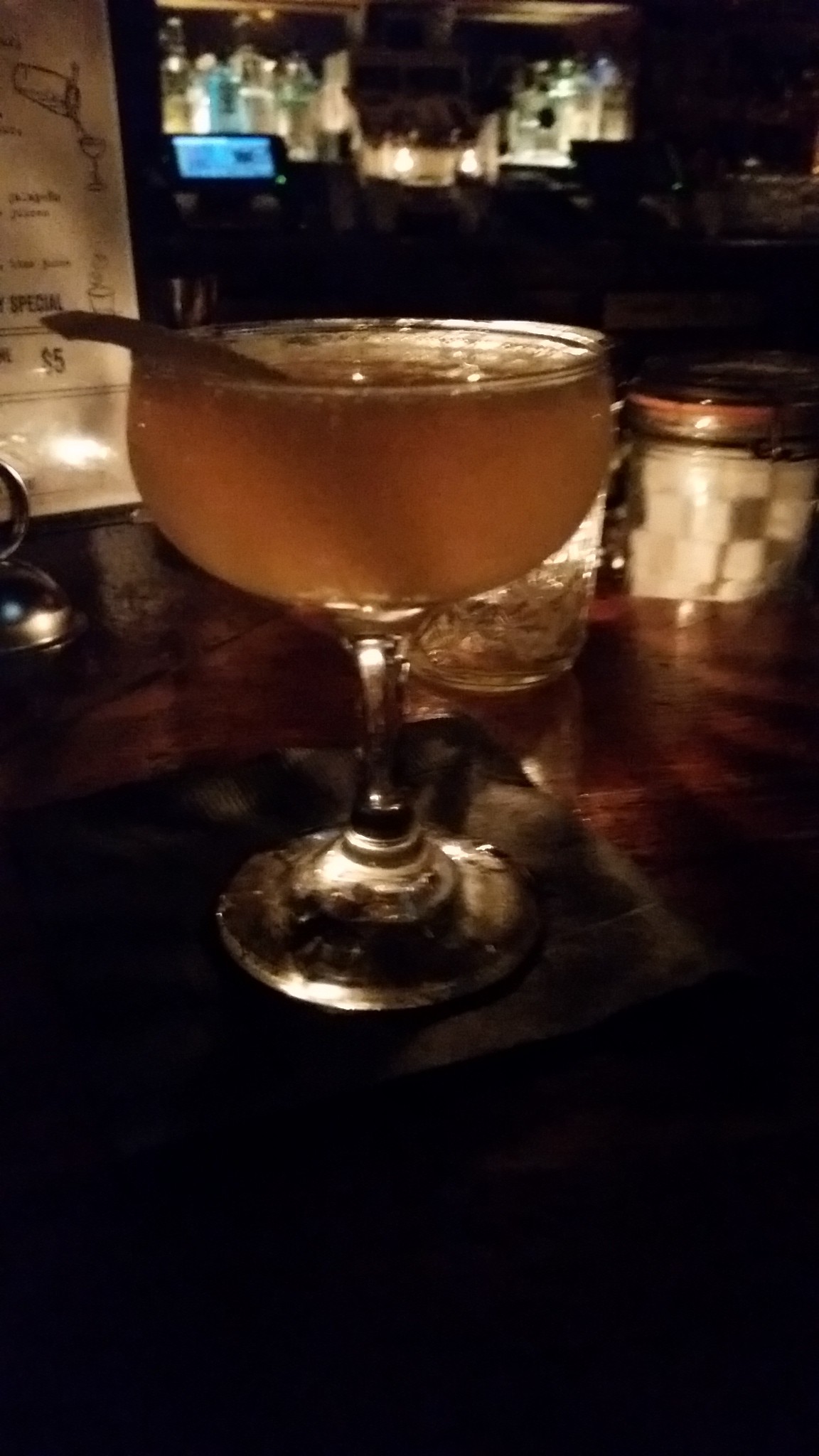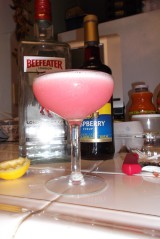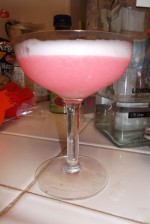 As I’ve been busily harvesting Harry Craddock’s “The Savoy Cocktail Book” for cocktails, I’ve managed to ignore a number of holidays and special events, including Valentine’s Day, the Super Bowl and, I suppose now, my personal Super Bowl, Oscar night. However, all of those occur every year.
As I’ve been busily harvesting Harry Craddock’s “The Savoy Cocktail Book” for cocktails, I’ve managed to ignore a number of holidays and special events, including Valentine’s Day, the Super Bowl and, I suppose now, my personal Super Bowl, Oscar night. However, all of those occur every year.
Leap Year is obviously a different story. It would have been an act of sheer idiocy to have ignored Craddock’s Leap Year Cocktail, and the embarrassing truth is that’s very nearly what happened. I’m glad to say, I re-stumbled over the drink in the nick of time, and it’s as good a way as any to wrap up this series of Craddockian posts.
In any case, as we are told, the Leap Year Cocktail was invented by Mr. Craddock for celebrations held at London’s Savoy Hotel on February 29th, 1928. Craddock claims a large number of marriage proposals were associated with the drink. That might be impressive until you remember, as numerous other cocktail bloggers have already pointed out, that 2/29 was traditionally the only day when it was once considered appropriate for a woman to propose a marriage to a man, rather than vice versa.
Of course, we’re sorta kinda almost beyond a lot of those outdated gender roles, and women are now free to risk the humiliation of a rejected proposal. So, I suppose, Leap Year in the here and now doesn’t mean much more than getting an additional day to get our taxes ready. As for the recipe Craddock debuted 88 years ago this Monday, it’s definitely not bad, but I’m not going to get married to it.
The Leap Year Cocktail
2 ounces gin
1/2 ounce sweet vermouth
1/2 ounce Grand Marnier
1 dash (or more) fresh lemon juice
1 lemon peel (garnish)
Combine the liquid ingredients in a cocktail shaker, shake vigorously and strain into a chilled cocktail glass. Add your lemon peel garnish. Craddock wrote that you should “squeeze your lemon peel on top,” but I’m not sure what that means. You can do the traditional lemon twist thing instead, if you like.
****
I tried this drink with a number of gins and a few different sweet vermouths. There’s only one type of Grand Marnier, though. If I had more time, I might have tried this with another orange liqueur like triple sec and/or Cointreau.
Such gins as Bombay Dry, Plymouth and Gilbey’s all worked fine; the result was pretty consistently floral and bittersweet, a decent combination that, even so, failed to knock my socks off. I noticed a marked improvement when I switched up my vermouth from Martini and Dolin’s and went with wonderfully bittersweet Carpano Antica, which blended more harmoniously with the bittersweet flavors in the Grand Marnier. I’m not sure if that version of the Leap Year Cocktail was worth a marriage proposal, but it certainly wasn’t a bad proposition.


 Today’s drink is very possibly the most obscure cocktail yet that we’ve explored from Harry Craddock’s post-prohibition classic, “The Savoy Cocktail Book,” and I sense that most of the people who care about such matters would say it’s obscure for a reason. In fact, they would probably agree that the Poppy Cocktail, which contains no poppy or poultry products, is nevertheless pure poppycock.
Today’s drink is very possibly the most obscure cocktail yet that we’ve explored from Harry Craddock’s post-prohibition classic, “The Savoy Cocktail Book,” and I sense that most of the people who care about such matters would say it’s obscure for a reason. In fact, they would probably agree that the Poppy Cocktail, which contains no poppy or poultry products, is nevertheless pure poppycock.
 I think it’s fair to say that probably no one really likes martinis as beginning drinkers. Vodka martinis might go down a bit easier than gin, but to neophytes, martinis taste pretty much like straight booze, and not in a good way. No wonder most of us start with rum and Coke, screwdrivers, the hated (by me…even when I was drinking them) Long Island Ice Teas, and my early favorite, Kamikazes (I’ll probably do that one eventually). Indeed, the only reason I developed my early affection for vodka martinis, which later graduated to gin, was that I really love olives and found green ones tasted extra-delicious after soaking in alcohol for a bit. So, it was sort of refreshing to find that I can still acquire a taste, as this week’s drink did not go down well initially.
I think it’s fair to say that probably no one really likes martinis as beginning drinkers. Vodka martinis might go down a bit easier than gin, but to neophytes, martinis taste pretty much like straight booze, and not in a good way. No wonder most of us start with rum and Coke, screwdrivers, the hated (by me…even when I was drinking them) Long Island Ice Teas, and my early favorite, Kamikazes (I’ll probably do that one eventually). Indeed, the only reason I developed my early affection for vodka martinis, which later graduated to gin, was that I really love olives and found green ones tasted extra-delicious after soaking in alcohol for a bit. So, it was sort of refreshing to find that I can still acquire a taste, as this week’s drink did not go down well initially.
 If you have a deep aversion to déjà vu, I advise you to take a break from today’s and, yes, next week’s posts. (I haven’t decided yet about the week after that!)
If you have a deep aversion to déjà vu, I advise you to take a break from today’s and, yes, next week’s posts. (I haven’t decided yet about the week after that!)
 Sometimes the difference between one drink and another is miniscule. Take a
Sometimes the difference between one drink and another is miniscule. Take a